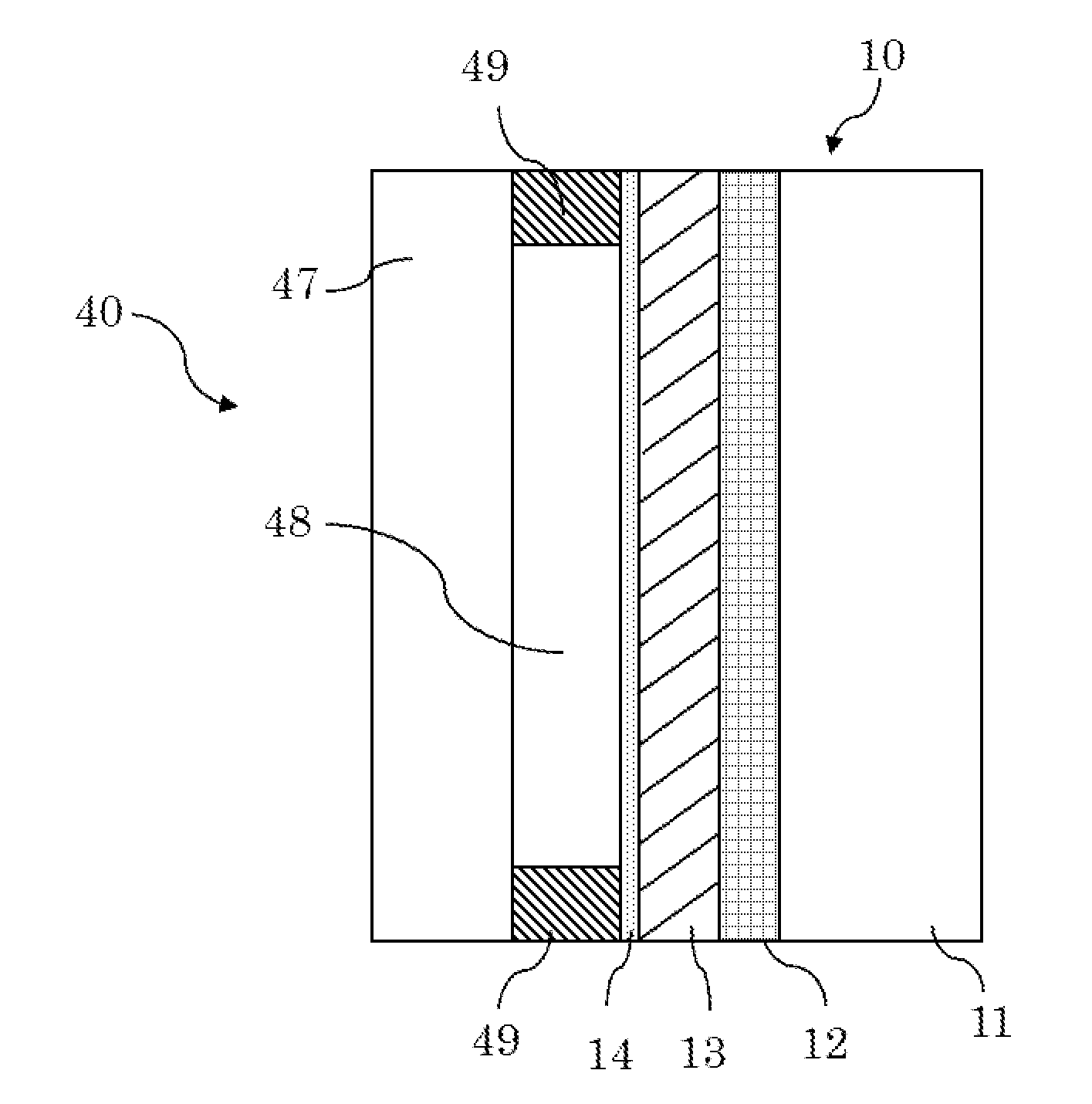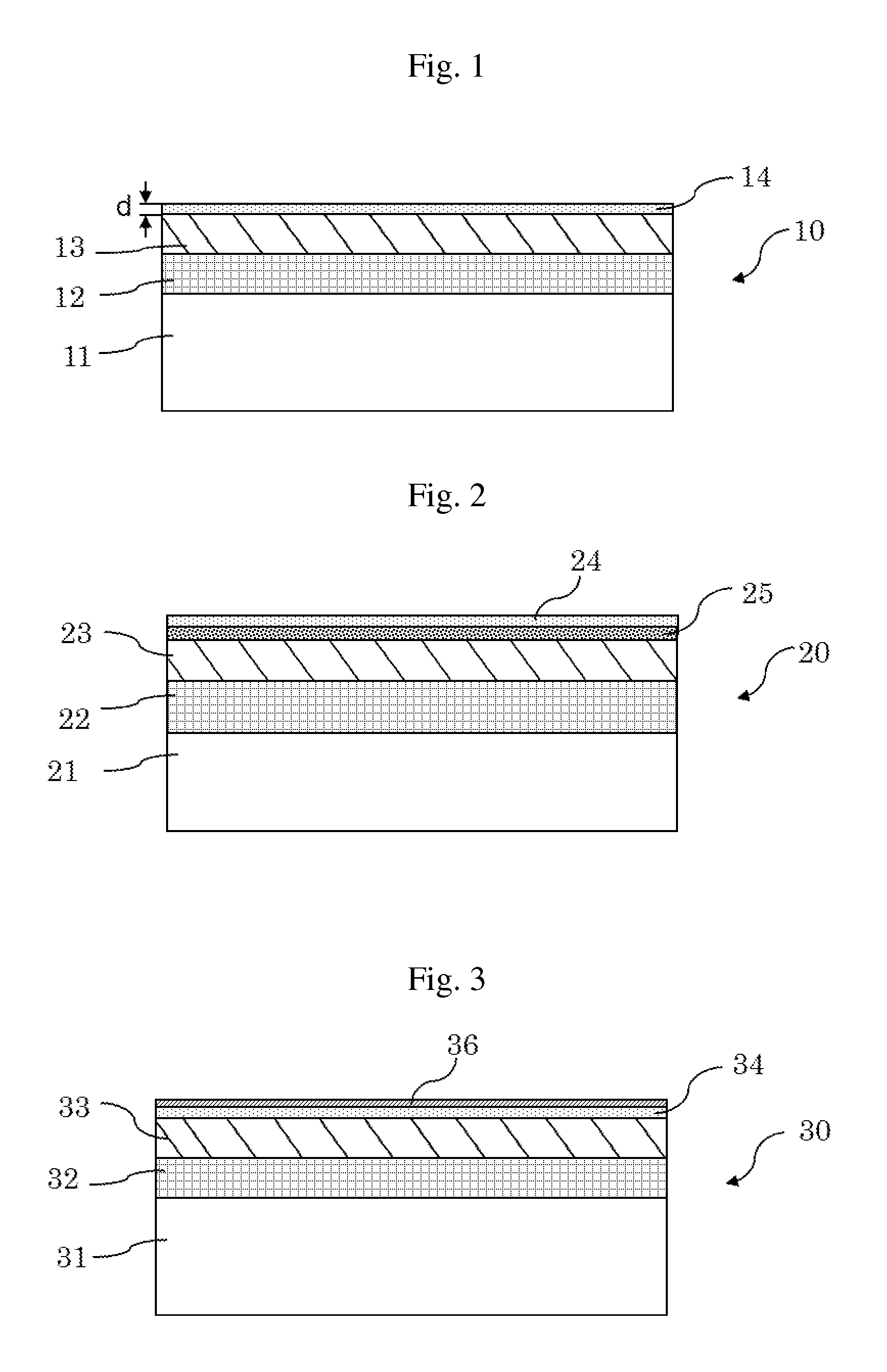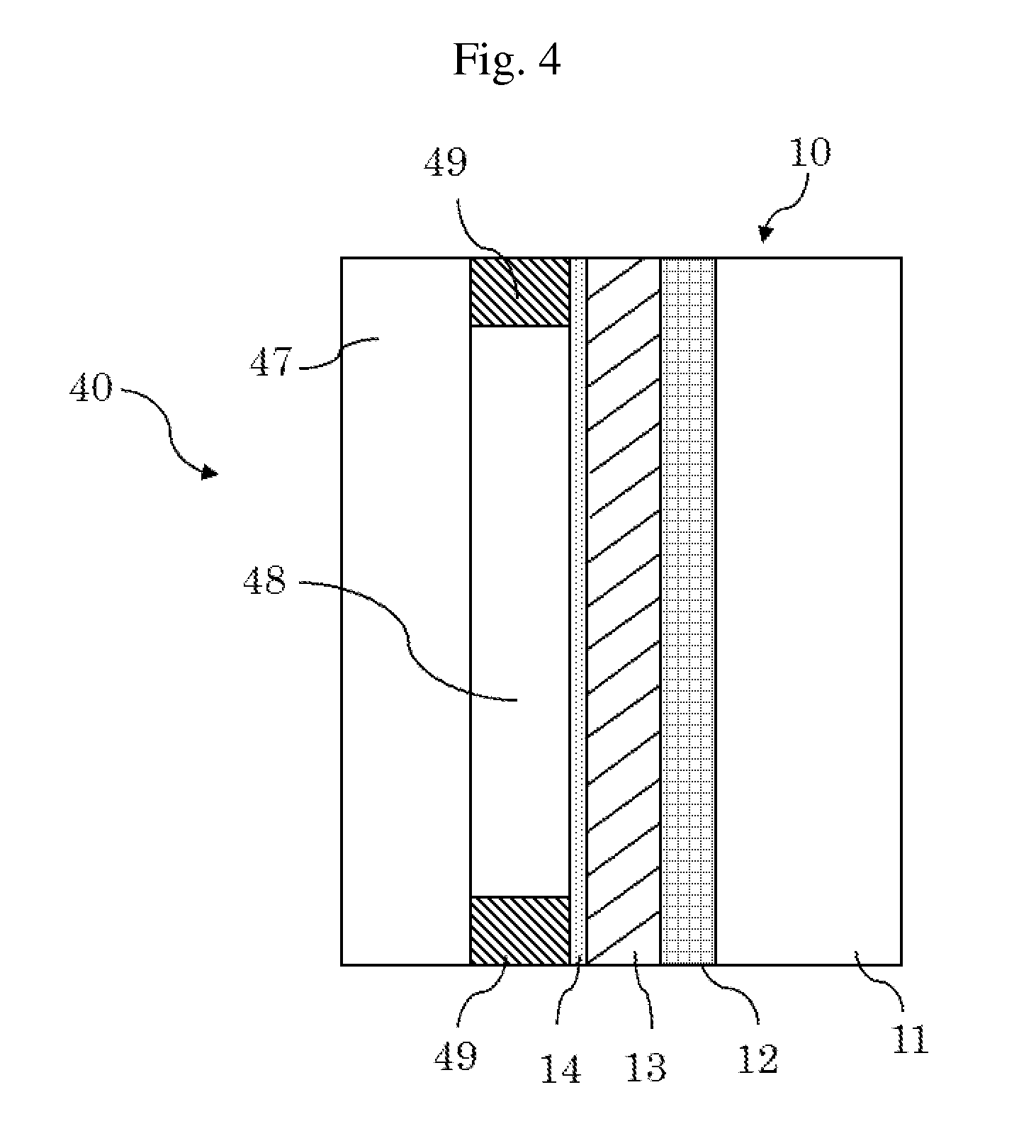Solar control glass and solar control double glass having the solar control glass
a solar control glass and double glass technology, applied in the direction of transportation and packaging, coatings, chemical instruments and processes, etc., can solve the problems of large-scale equipment, increased production costs, and corroded metal films, and achieve excellent thermal insulation properties of heat-ray reflection layers, suppresses heat emission from a room, and retains heat in the room
- Summary
- Abstract
- Description
- Claims
- Application Information
AI Technical Summary
Benefits of technology
Problems solved by technology
Method used
Image
Examples
example 1
(1) Preparation of Heat-Ray Reflection Layer
[0132]A composition having the following formulation was applied onto PET film (thickness: 100 μm) with a roll coater, dried in an oven at 80° C. for 1 minutes, and subsequently exposed to ultraviolet rays (high-pressure mercury lamps, irradiation distance of 20 cm, irradiation time of 5 sec.). Thereby a hard coat layer comprising acrylate resin (thickness: 500 nm) was formed on the PET film.
[0133](Formulation of Hard Coat Layer (Parts: Parts by Weight))
[0134]Dipentaerythritol hexaacrylate (DPHA); 40 parts
[0135]Photopolymerization initiator (Irgacure® 184); 2 parts
[0136]Methyl isobutyl ketone; 180 parts
[0137]Subsequently, an aqueous dispersion (solid content: 1.3% by weight) was applied onto the surface of the hard coat layer with a bar coater, dried at 135° C. for 1 minute to form a heat-ray reflection layer (thickness: 500 nm). The aqueous dispersion is a mixture consisting of poly(3,4-ethylenedioxythiophene) and poly(styrene sulfonic ac...
example 2
[0146]The procedures of Example 1 were repeated except for changing the thickness of the heat-ray reflection layer to 100 nm to prepare a solar control double glass.
example 3
[0147]The procedures of Example 1 were repeated except for changing the thickness of the heat-ray reflection layer to 1000 nm to prepare a solar control double glass.
PUM
| Property | Measurement | Unit |
|---|---|---|
| electrical conductivity | aaaaa | aaaaa |
| surface emissivity | aaaaa | aaaaa |
| electrical conductivity | aaaaa | aaaaa |
Abstract
Description
Claims
Application Information
 Login to View More
Login to View More - R&D
- Intellectual Property
- Life Sciences
- Materials
- Tech Scout
- Unparalleled Data Quality
- Higher Quality Content
- 60% Fewer Hallucinations
Browse by: Latest US Patents, China's latest patents, Technical Efficacy Thesaurus, Application Domain, Technology Topic, Popular Technical Reports.
© 2025 PatSnap. All rights reserved.Legal|Privacy policy|Modern Slavery Act Transparency Statement|Sitemap|About US| Contact US: help@patsnap.com



